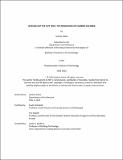| dc.contributor.advisor | Grönfeldt, Svafa | |
| dc.contributor.advisor | Klopfer, Eric | |
| dc.contributor.author | Gatta, Audrey | |
| dc.date.accessioned | 2023-07-31T19:56:30Z | |
| dc.date.available | 2023-07-31T19:56:30Z | |
| dc.date.issued | 2023-06 | |
| dc.date.submitted | 2023-07-13T21:29:58.734Z | |
| dc.identifier.uri | https://hdl.handle.net/1721.1/151654 | |
| dc.description.abstract | The world is designed for right-handers: starting from a young age, left-handed children are being stimulated from a right-handed perspective, including through their interactions with toys, tools, interior design, sports, and more. While left-handers may be able to adapt to certain right-handed tools, it is important to design for left-handers in several realms, including toys, since children are developing fine motor skills as they play. Furthermore, a child’s environment influences hand preference, so it is viable to design in such a way that stimulates the use and development of their dominant hand. This thesis explores how and why handedness should be addressed in toy design, culminating with a prototype of a diagnostic toy that assists in identifying handedness preferences while also targeting play with a specific hand through environmental bias and bilateral coordination. | |
| dc.publisher | Massachusetts Institute of Technology | |
| dc.rights | In Copyright - Educational Use Permitted | |
| dc.rights | Copyright retained by author(s) | |
| dc.rights.uri | https://rightsstatements.org/page/InC-EDU/1.0/ | |
| dc.title | Leveling Out The Left Field: Toy Design for Left-Handed Children | |
| dc.type | Thesis | |
| dc.description.degree | S.B. | |
| dc.contributor.department | Massachusetts Institute of Technology. Department of Architecture | |
| mit.thesis.degree | Bachelor | |
| thesis.degree.name | Bachelor of Science in Art and Design | |
